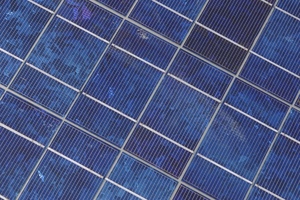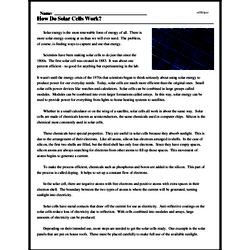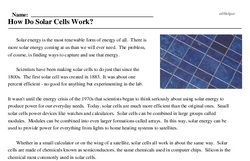How Do Solar Cells Work?
Solar energy is the most renewable form of energy of all. There is more solar energy coming at us than we will ever need. The problem, of course, is finding ways to capture and use that energy.
Scientists have been making solar cells to do just that since the 1800s. The first solar cell was created in 1883. It was about one percent efficient - no good for anything but experimenting in the lab.
It wasn't until the energy crisis of the 1970s that scientists began to think seriously about using solar energy to produce power for our everyday needs. Today, solar cells are much more efficient than the original ones. Small solar cells power devices like watches and calculators. Solar cells can be combined in large groups called modules. Modules can be combined into even larger formations called arrays. In this way, solar energy can be used to provide power for everything from lights to home heating systems to satellites.
Whether in a small calculator or on the wing of a satellite, solar cells all work in about the same way. Solar cells are made of chemicals known as semiconductors, the same chemicals used in computer chips. Silicon is the chemical most commonly used in solar cells.
These chemicals have special properties. They are useful in solar cells because they absorb sunlight. This is due to the arrangement of their electrons. Like all atoms, silicon has electrons arranged in shells. In the case of silicon, the first two shells are filled, but the third shell has only four electrons. Since they have empty spaces, silicon atoms are always searching for electrons from other atoms to fill up those spaces. This movement of atoms begins to generate a current.




